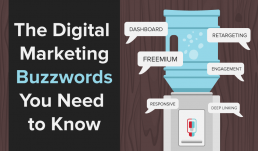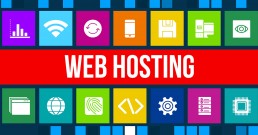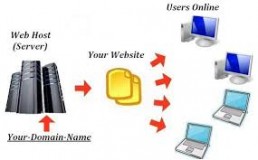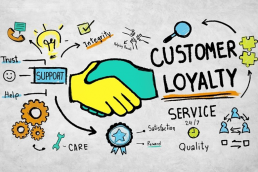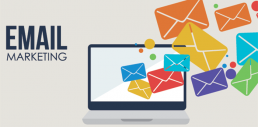4 Costless Inbound Marketing Ideas You Should Try in 2018
Are you just getting started with inbound marketing? Have you been doing inbound marketing for sometimes now? How long do you think it should take one before they start seeing results? If you are getting started with inbound marketing, you will definitely find it very challenging. Many marketers wonder how much it could cost to regularly generate content, improve social media outreach and all aspects of inbound marketing.
The good news is that there are countless ways you can increase your inbound marketing activities without having to break the bank. In other words, the basics are not out of your reach. From writing your own content to utilizing thousands of available website tools to help you reach your potential customers, here are 10 no-cost inbound marketing ideas you can try.
- Create high quality free content
Publishing high quality content remains the key to successful inbound marketing. If you want to attract customers to your website, you must publish high quality, valuable content. Content can be in the form of blog posts, articles, videos, infographics, white papers or tweets, among others.
At the very least, dedicate a few minutes of your time to create well-written content that is relevant and useful to your audience. of course if you are unable to produce the content yourself, you can contract a marketing agency or freelance content producers to help you publish the right content that will not only be right for the search engines but also one that your users will love.
- Create a loyalty program
You can develop a simple strategic partnership with your prospects through loyalty programs. A good example is B2B referral software known as Advocate Hub. This software allows users to build a loyalty program so that the firm can trigger customer enthusiasm and boost referrals of qualified leads.
Loyalty programs are done by incentivizing partners, customers and employees so that they become brand ambassadors of your target audience. Incentives can range from discounts to reward for content created such as guest posts and online reviews and testimonials.
- Use social media networks
Social media networks have become the cornerstone of inbound marketing, thanks to their global outreach. Social media like Facebook, Twitter, Pinterest, Snapchat, LinkedIn and Google++ can be used to promote and share content, products as well as special offers. Social media also allows you to not only interact with your customers, but also create brand loyalty.
Remember to keep track of your social media interactions both on your website and on your social media profiles/fan page.
- Lead nurturing
Lead nurturing is the process of ensuring that your prospects are ready to buy before directing them to your sales team. Sometimes your sales department can waste valuable time and resources on leads that are not qualified. Here are some tips on how to ensure successful lead nurturing:
- Ensure the timing is right: do not rush your prospects such that you start bombarding them with your sales emails soon after they hit the subscribe button or like your page. It is important to take your time to bring them closer to wanting to open their wallets
- Constantly and consistently refine your messaging: know the kind of information your prospect wants to hear based on the data you have collected. By ensuring that you keep giving them the right and relevant information, you will be building rapport and trust with your customers.
- What do you want to give them? State what you want to provide them and what they stand to gain from your offer.
- Videoproduction on demand or VPD can be one of the brightest ideas of 2018. VPD gives you the ability to produce broadcast quality visual imagery for your business. We provide Video Production, Graphic Design and Audio Video services. Instead of being left with the question of how much does it costs, you now can ask the questions when, where, and why. Mjrvisuals invites you Get started today ! Click here to learn more. Video production on demand by Mjrvisuals
Marketing Buzzwords You Should Know
© 2024 MJRvisuals. All rights reserved
Many marketers think of marketing buzzwords as some over-used, obnoxious industry jargon that means absolutely nothing. But maybe it is time we go back to the basics. Maybe it is time we re-educate ourselves on the true meaning of some marketing terms. So what are the marketing buzzwords we should be focusing on this year?
• Pragmatic TV marketing
It is a fact that most customers don’t wait to watch a TV episode when it first airs on TV, thanks to streaming servers that make it possible to watch shows on-demand at any time that is convenient to the viewers. For instance, if you miss marketing to people who watch “The legend of the Seeker” on ABC, you can still market to those who decide to watch it online on Hulu. Smart marketers are now using the guerrilla approach to reach customers on TV, YouTube, and other streaming channels. Companies Like Media Design Group uses that approach to design individual customer profiles using available data. This is what makes it possible for these kinds of businesses to reach millions of customers through personalized ads systems wherever they are.
• Local Search Marketing
Local search marketing refers to the process of optimizing your content for local search. In other words, you can target the local market by optimizing your digital properties to generate traffic from very specific locations/countries/towns/regions. Thus, it is safe to say Local search marketing is the foundational digital marketing strategy for local businesses. Your local customers can find you based on the information they get from search engines.
• Analytics
Analytics is a fancy word for analysis of data. Whoever you are running some marketing campaigns, it is important to look at the data, analyze it, and make conclusions.
Simply put, analytics is the marketing dashboard to help you track your numbers and find out what areas need improvement.
• Conversions
When a customer takes action such as making a subscription, opting into your marketing list, downloading, purchasing, or sharing your content, we say the customer has converted. Conversions can thus be viewed as some sort of interactions between the customer and your business.
• Influencer marketing
It has been found that nearly 84% of marketers have lined up at least one influencer campaign in the coming year. Influencer marketing involves the process of using influential members of society to market your products and services. For instance, you can find influential users on Social Media who can help deliver your marketing messages. Influential users can significantly influence consumers to trust your brand.
• User-generated content marketing
Smart marketers also understand the power of user-generated marketing. User-generated content is normally content that is generated by the users, and in most cases, it is not solicited or paid for by the company. Many consumers have come to trust user-generated content because it comes from other users who might share vital experiences. In other words, user-generated content seems more authentic because it is not coming from marketing experts. Another advantage of user-generated content is that there are no risks involved in terms of cost if it doesn’t produce the desired results. Mjrvisuals company has its own thoughts, engage your business marketing through video content with video production and design when you need it.
• Referral marketing
Did you know that people are four times more likely to make a purchase if a friend recommends the product or service? Referral marketing can also be called word-of-mouth marketing and utilizes the power of personal recommendations to build trust and bring in new businesses. The key to having referral marketing work is by having loyal customers who are willing to act as your brand ambassador.
Webhosting Secrets Every Web Site Owner Should know
If you are serious about your business, make sure that your website is in good hands. Choosing the right web site host is the best decision you can make. Any server downtime can greatly ruin your business and limit your chances of growing your customer base. Sometimes, hosting a website can be such a confusing experience for web site owners, especially for the first timers. If this is your first time dealing with web hosting, it can seem like a maze of jargon floating around in the technical world. Be it as it may, I have gathered 10 simple secretes that you need to arm yourself with.
- You Get What You Pay for
With web hosting, what you pay for is exactly what you get in most cases. If you go for a cheap host, you’re most likely to get cheap services which include poor customer support, low bandwidth, and servers that crash more often than your PC.
Cheap is expensive. Beware of all the catch phrases in that advertisement banner. If you are serious about your business, you must also be serious about the host who is going to host your website. It is not difficult for people to fall prey to a bunch of spammers who will extract your private information, force advertisement banners on your pages, and extract your customers’ information, in the name of cheap web hosting offers.
It is quite unfortunate that many business people often care too much about the dollar side of web hosting services at the expense of quality, and professionalism. Choosing a web hosting service that will ensure your privacy, efficiency, and availability should be a priority of any web site owner. However, it is still possible to get a web hosting company that offers great services at a cheap price.
The following is a list of top ten web hosting companies and their prices.
2. Understand the "Free Domain" Gimmick
Buying a domain name independently Vs using a free domain offered by the web hosting provider is one of the toughest decisions you may have to deal with. It is critical that you understand how this works out before committing yourself to either of the options. The idea of getting a free domain name from your web hosting provider sounds great but there are things you need to into consideration:
● How long do you plan to use the domain name?
● Who will own the domain name?
● How much will it cost for subsequent renewals
Unless you are planning to use the domain name for a short campaign period, and you don’t intend to renew it afterwards, it is not advisable to go for the free domain name being offered by the web hosting company. Here is why: you may find yourself in unforeseen difficulties if you decide to change your hosting company in future as you may not be able to access the domain registration information. That means that the domain name is ‘free’ for you to use, but the ownership of the domain name remains with the web hosting company.
Essentially, you’ll find yourself in a situation where you are stuck with the web hosting company forever, or you are forced to pay a hefty fee to buy back the domain name.
3. Understand Domain Name Registration
Many people underestimate the concept of domain name registration. As a matter of fact, a domain name entails many things that will affect you in a number of ways in the future. Just like the web hosting services provide you with many options, a domain name also provides you with different features.
Therefore, not all domain registration companies have the same features. So, beware of those registrars that entice you with cheap prices because you may find that they lack some features. A good domain name should come with the following features at no extra costs.
● Should include your own control panel
● URL Redirection – It should make it possible for you to forward your domain name to another web address
● Email Forwarding for multiple addresses
● Full DNS control
● Sub domains
● Registrar Lock
If you buy a cheap domain name, chances are that you will have to folk out extra cash for the above features whenever you need them.
4. Differentiate Between Domain Name and Hosting
If you are new on this, it may get confusing. Nonetheless, the difference between the two has already been hinted above. All we are saying here is that it is not necessary that your web hosting company should also sell (or freely offer) you a domain name as well. You have the option of buying a domain name separately and forward it to your web hosting provider.
That domain names don’t have to be registered at the same web hosting company does not mean you cannot do it. All we are saying is that you need to do a comprehensive research into the whole thing so that you understand what you are getting out of it. Remember a domain name is your only online identity, and that is why you need to do more home work on it. In fact, it is the most irreplaceable online asset you can ever have.
Web hosting companies will naturally urge their customers to register their domain name with them, but you should also not forget that it is profitable for them. Therefore, you should find out whether it will be convenient for you to do that. For example, are your prepared to lose your domain name if the web hosting company goes down or you decide to migrate to another web hosting company?
5. Understand the Different Web Hosting Options Available
Before you buy a product, you must understand its features and know whether it is going to satisfy your needs. In the same way, the type of web hosting services you choose depends on your unique needs, which includes things like the size of your web site’s files, the number of visitors your expect, your preferred operating system and the nature of web site you intend to put up.
In that case, it would be great if you understood the different web hosting options available before signing up for one. There are 5 types of web hosting services available:
a. Free Web Hoisting
Well, free web hosting is free. This type of hosting is normally provided by web hosting companies as a way of giving their customers opportunities to taste their services. Otherwise, free web hosting services are suitable for those people who don’t anticipate a lot of traffic to their site.
Free web hosting services are best suited for non-commercial sites such as personal journals, photography, and so on. You expect to find the following features in a free web host:
● Low connection speed
● Limited storage space
● Frequent website downtime
● Advertisement appearing on your pages
● Limited technical support
● Low security options
● Limited software and apps options
● Limited number of pages
● You cannot use AdSense
● Limited database and statistics support
While some companies would require you to purchase a domain name in order to use their services, most of them will let you use a subdomain name under them.
b. Shared/Virtual Hosting
With shared hosting, server space and other resources are shared with other web sites. Shared web hosting is one of the cheapest web hosting services and one of the most commonly used.
The only disadvantage with it is that you are bound to experience web site downtime especially if you share with gambling or pornographic web sites. The following are some of its features:
● Low cost
● Own domain usage
● Good technical support
● Frequent web site downtime
● Multiple software usage option
● Limited security due to sharing server with many sites
● Limited database support
● Best for small business with not so huge traffic
- Dedicated Hosting
Dedicated hosting is the opposite of Shared hosting, here, you have a server dedicated to yourself. It is one of the most expensive web hosting services, but with it you can be assured of maximum security and efficiency.
However, with dedicated server, you are responsible for its maintenance and cost of operation. It is best suited for web sites that require many resources as well as those with high traffic.
The following are the features of dedicated web hosting service:
- Good for large business with high traffic such as Amazon, EBay, e.t.c
- Multiple domain name options
- Powerful email solutions
- Great database support
- Unlimited software support
- High security
- High cost
- Requires expert skills
- Collocated Hosting
In this type of hosting, one purchases a server, and have it hosted at a web host’s facilities. Here, you have full control of your server, and you can decide to do anything with it such as installing applications you need, add more ram and disk space, install a better perfuming CPU, and so on.
- The following are features of collocated hosting:
- High Bandwidth
- High cost
- Requires expert skills
- Great database support
- Unlimited software support
- Harder to configure and debug
- High security
Reseller web hosting is for web masters and online entrepreneurs who want to resell their own web hosting services to those who need them. Those who have many websites can also take this option as it will enable them manage many websites from one central location.
Having looked at that, it is best to look at the features being offered by the type of web host you want to sign up with. For example, you need to take into consideration your budget, type of business you are engaged in and the bandwidth (as well as disk space) you need.
Once you have selected a given type of web hosting you need, you can compare different offers from different companies. Suppose you decide that you want to deal with shared web hosting, you will realize that there are different companies offering that type of web hosting services. Therefore it is good you understand the features being offered.
Aside from that, you might also find the following suggestions invaluable when dealing with web hosting services
- Don’t go for long term contracts. Unless you are 100% sure what you will be doing in 5 years, it is advisable to go for short term contracts like one year rather unless you trust the web host. In most cases, you’ll be given ridiculously high discounts for longer periods like 2 years, 3 years, 5 years…
- Consider the Payment method. Most people prefer PayPal as a means of payment rather than credit cards as it is more convenient and safer. But if you trust the company, you don’t have any reason to worry.
- Always Back-up your files. You definitely can’t rely on your web host 100%. It can be considered unwise to fail to back up your online files in other places such as your PC. You never can tell what will happen in future.
How to Create a Smashing Brand: 5 ideas to refresh your online branding
Did you know that a strong identity helps your customers to remember you and makes you stand out in the marketplace? However, here is some news for you: branding is more than just shinny logos and a fancy name. Branding essentially involves helping customers to have a sense of belonging and attachment to your products, services, culture and values. If you want to create an unforgettable brand online, it needs to be consistent, recognizable and should appear across all aspects of your online presence. Learn how to create an unforgettable brand using these five tips.
- Are you prepared to spend some money?
When it comes to online branding, you cannot avoid spending some money. If you want to make more money, you have to spend more money. It means you will have to spend in things like social media, Ad Words, and content creation.
- Identify and convey your purpose
In order to create a powerful online brand, you need to create a defining purpose that will act as your compass. Sometimes it is good to go back to the basics. Why are you in this business in the first place? Does your mission and purpose translate into your online presence?
- Keep it real
Sometimes small businesses suffer into oblivion because of their insistence to look ‘big’ and corporate like. The truth of the matter is that you don’t have to. If you want your brand to stand out online, do not hastate to put your personality behind it. People are more receptive to people. For instance, try to include your picture in your company profile. You could also infuse some humor into the content. Authenticity should be your goal regardless of whether you are new in the market. Be passionate and you will attract passionate clients into your online business.
- Revisit your target audience
Do you really know who your target audience is? You need to know who your target audience are and where there are or where you can find them. Therefore, you need to make sure you can consistently target your audience so that your audience find content when they expect it.
- Conduct yourself professionally
Whatever you do, remember that this is business. So you should pay a close attention to how you conduct yourself. Avoid being remembered for the wrong reasons by ensuring you post or publish credible and factual content. Go for quality over quantity. You have probably heard the saying that goes: it is not what you say, but how you say it that is essential when it comes to marketing. Although your personality reflects on your startup at the beginning, the personality of your startup will become an integration of voices that write for your brand.
It is important to keep in mind that what is being said about your brand is very important; therefore, it is important to make sure you listen to your audience.
Mjrvisuals can help you increase your reach out of that content in your website through our expertise. We run the gambit of visual imagination including video production, digital marketing, video editing, print design, advertising, graphic design, graphic animation, motion graphic and media design. Be part of our portfolio of clients and let us tell your story to the world. Click here to visit our website: mjrvisuals.com/
Web design Tricks to Build Customer Loyalty
What are some of the elements in website design that one must include when looking to build customer loyalty? If you are looking to build a website for your small business, you know very well that nurturing customer loyalty is an important priority. Unfortunately, many businesses miss the opportunity to build customer loyalty and retain existing clients through their websites. You can get more out of your existing customers as well as new prospects if you incorporate the following elements in your website.
- Responsive Design
More and more business owners and agencies are embracing responsive web design and in this age of mobile technology, why would anyone be left behind?
Customers don’t want to struggle with websites that aren’t mobile friendly. Statistics show that non-responsive websites are likely to lose more than half of their potential customers because more than 50% of searches are now done through mobile devices. Moreover, customers who access your site are likely to access it in future using multiple devices. In other words, even if people visit your site via their desktop, they might get disoriented the next time they visit it using their mobile devices and it is not responsive.
You can have the best product in the world, but if your website isn’t designed to be mobile responsive, you are losing tons of customers to your competitors.
Therefore, it is important to look for a professional custom web design service that can create a responsive website.
- Encourage referrals
Did you know that a well-designed website can help to facilitate referrals? The most loyal customers are acquired through client-to-clients referral networks and recommendations. Looking for web design packages that are network-driven can make the difference between struggling to get clients and enjoying a constant stream of new leads.
You can encourage your existing customers to refer your business by giving them special bonuses for every new business they bring. People are more likely to believe friends who have done business with you than some ad in their sidebar. So you should make it easy for customers to refer other customers to you.
- Social media share buttons
Social media buttons are essential if you want your content to be shared widely. When your audience find your content valuable, they are likely to share it via their social media accounts. This is a free and effective way of marketing your website. In order to incorporate unique social media share buttons in your website, look for a custom web design agency that knows how to create elegant buttons.
As a rule of thumb, your social media share buttons should big, prominent, unique and beautiful. The only way to achieve that is to look for a web designer that knows what they are doing. Incorporate social media share and like buttons into every page of your website to enhance maximum engagement with your audience.
- Offer great value/offer irresistible value proposition
Customers come to your website because they want or need something. Give them solutions that will solve or help them solve their problems.
Through a custom website layout that promises value to your customers, you are able to gain more customers. It is advisable that you offer a freebie such as free eBook, webinar, and course or trial product so that your customers can have a taste of your services and content before paying for them. If it is what they are looking for, they will be more than ready to pay for the full service.
Having said that, your website layout must be neat, impeccable and functional in order to capture the attention your customers and entice them to sign up with your free offer or trial.
- Get customized web design
A customized web design enhances personal engagement with your customers. Customers want to enjoy personalized services. Customers also want to get assurances they can get hold of you through your phone or email when they want to. Therefore, your email, phone number and physical address should be prominently displayed in case customers want to reach you for whatever reason. It is also inspires confidence in your customers.
Don’t forget to include a comment form so that customers can give you feedback. In addition to that, it is good to have live chat capabilities. The more your customers are easily able to get in touch with you the better.
How do you Create Marketing Emails that Will Generate Instant YES?
When a well-crafted email hits your inbox, you open and act on it because it grabs your attention. These emails might look simple and natural. Achieving a clear, balanced and persuasive message takes time and effort, but it is worth it. In order to create an email that will generate positive results (people clicking your Call to Action), here are steps that need to be taken into consideration. Think of these steps as a logical staircase where you need to move from one step to another.
- Make your messages consistent and persuasive
Human beings like consistency. It is hard-wired in our brains. For example, once someone decides to do something, they would strive to make all future behavior to match past behavior. If there is a mismatch, the person immediately begins to feel that something has gone amiss somewhere. It is the same with the emails you receive.
An email campaign should have a consistent message to elicit an action. Emails that have a consistent and persuasive message always outperform those that don’t. A consistent and persuasive email should lead one to take an action.
An inconsistent message is one whose parts don’t add up, i.e. they offer contradictory information.
Example
Suppose that your email is something like “Unbeatable Discount on iPhone 6 this Week”, yet the headlines says, “20% off on all smartphones,” with many types of smartphones being presented.
Although the email may not be factually wrong, it is inconsistent and you are likely to lose some customers. Your message will be more successful if all the components agree.
- Use high quality and relevant images
Use images that are not only relevant to the offer, but also high quality and original. Showing stock images is an instant click-killer. Make sure your images supports the main messages and that they reappear on your landing page—the page your customer will land after clicking the Call to Action button. This will make people feel that they have landed on the right page.
- Have a great presentation layer
Treat your promotional email like a shopping window. The more inviting the presentation, the more likely people will want to enter your shop. Just having a great product is not enough to make people want to buy from you or sign up for your services. Having an inviting presentation layer in your email will grab the attention of your subscribers.
- Precision Targeting is Indispensable: Target the right audience
In theory, it would seem like sending an email to everybody will increase your sales, but that is not what expert marketers do. When it comes to sending email campaigns, targeting the right audience is very important. According to Marketing Sherpa, sending an email to untargeted database is counterproductive. Unfortunately, many small business owners do this all the time.
Collecting email list and blasting everyone that is on that list with an email campaign is akin to shooting in the dark, and it is a bad habit that you need to stop immediately. Why would you want males on your list to receive email offers about "fashionable bras" that you recently launched? Wouldn't that be shooting yourself in the foot?
Highly targeted email campaigns experience 208% higher conversion rates compared to the “batch and blast” emails. As a marketer, you need to rise above the mediocrity and segment your list. Optimized email marketing pays off big time. Marketers that use email segmentation record a higher ROI compared to aimless emails. Moreover, email segmentation drastically reduces opt-outs.
Here are the steps to take if you want to send targeted email campaigns:
- Target a high-value segment
Now that you have an email subscriber list, it is time to separate the wheat from the chaff. A good way to find valuable segment from the list is to look at your list bearing three factors in mind:
- How recent is the subscriber? Subscribers who have done business with you recently are more likely to respond to your email campaign.
- How often does the subscriber buy? Subscribers who purchase from your more frequently are more likely to respond than others.
- How much does the subscriber spend? Subscribers that have spent 50% more than your average subscribers are more likely to respond to your emails.
This is not the be-all and end-all email segmentation check list, but it is a good starting point.
- Target using demographics
If possible, divide your list into specific groups to enable you send personalized, targeted and relevant messages. Without further ado, here are five main demographic features you can use to segment your list:
- Geographical locations: if you are serving cross-border markets, dividing your list according to geographical location will make it easier for you to send emails at the right time. This will also ensure you don’t break respective laws and regulations.
- Age: you might have offers targeting different age groups, which means that you can target millennials/college students, baby boomers, little kids and retirees, among others.
- Gender: just as you might want to specifically speak to a college student or retiree, you might want to customize your offers and messaging based on gender.
- Industry: if you have lists that cut across several industries, it is prudent to segment your list based on industry to add another level of personalization.
- Persona: you should study your subscribers and understand them. Know what makes each of them tick and design email messaging around their persona.
Offering exclusive email content to target audiences allows you to offer exact solutions that solve specific needs/dilemmas and supports conversations that will drive your conversation rates and increase your ROI.
Email marketing is still one of the most effective ways to reach and engage with your customers. However, in the absence of effective email marketing strategy, you might not achieve your marketing goals.
Mjrvisuals can help you increase your reach out of that content through our expertise. We run the gambit of visual imagination including video production, digital marketing, video editing, print design, advertising, graphic design, graphic animation, motion graphic and media design. Be part of our portfolio of clients and let us tell your story to the world. Click here to visit our website: mjrvisuals.com/
How to Increase Customer Engagement
How to Increase Customer Engagement
Customer engagement is one of the most important keys to running a successful business. Hence, you must create a strong and proper customer acquisition strategy in order to engage the customer. How do you improve your customer engagement?
The best way to improve customer engagement is by turning the business into a customer centered one. However, this can be a challenging undertaking and may take a little time to accomplish. But if you are patient, you can greatly improve on your customer engagement.
Here are 7 ways to increase customer engagement:
1. Put the customer at the center
Without the customer, your business cannot be. The customer is the most important person in your business. So placing the customer at the center of the business is the most logical thing to do. As you do so, you must ensure that you have a very clear focus on where, when and how you will interact with the customer.
2. Be honest with yourself when assessing your failures.
Things may go wrong, and often they will. However, if you are honest when it comes to assessing what is holding you back, you have a better chance of creating a better customer engagement or relationship. Then you need to make a strategy on how to tackle the problems. It is recommended that you start by setting achievable and quick goals before proceeding towards hard and long term goals.
3. Capture customer feedback
Customer feedback is an essential tool when you are in the process of creating great customer engagement. It ensures that you will learn customer behavior and get insights that will help you to fulfill your customer needs.
4. Understand value exchange
Understanding value exchange involves first understanding and then building the information exchange program. Identify which kind of information customers are normally happy to share and understand what your business and the customer can gain in exchange.
5. Take a broader picture
If you want to improve customer engagement, taking a broader picture is important instead of focusing on individual experiences. For instance, all areas in your company have a role to play when it comes to customer engagement and doesn’t apply to marketing or customer service alone; therefore, it is important that you focus on the whole picture.
6. It is not all about marketing
Marketing might be an important component of any successful business, but you have to go beyond marketing. You need to study various customer retention strategies. All successful businesses treat the customer as their most important person and design their strategies around retaining the customer. It involves everyone in the organization, not just those who interact directly with the customer.
7. Empowering business users
It is important to empower business users who keep you updated about your customer experiences instead of leaving all that responsibility to the IT department. You should align all the marketing, sales and customer service department around the customer. In order to achieve this, it is advisable that you develop a complete buy0in from the Chief Executive Officer including all the other executive team members of the organization.


